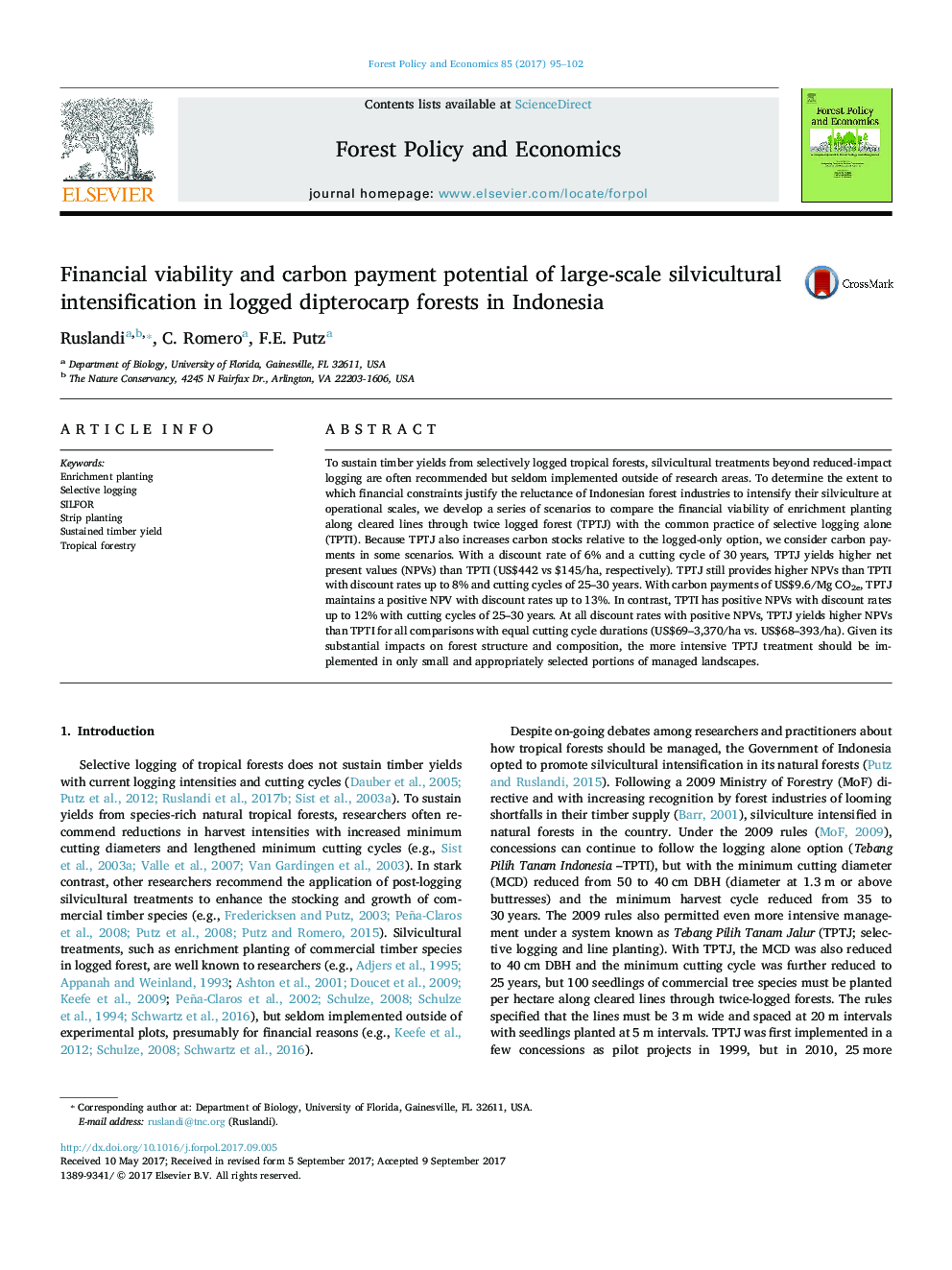| Article ID | Journal | Published Year | Pages | File Type |
|---|---|---|---|---|
| 4759726 | Forest Policy and Economics | 2017 | 8 Pages |
Abstract
To sustain timber yields from selectively logged tropical forests, silvicultural treatments beyond reduced-impact logging are often recommended but seldom implemented outside of research areas. To determine the extent to which financial constraints justify the reluctance of Indonesian forest industries to intensify their silviculture at operational scales, we develop a series of scenarios to compare the financial viability of enrichment planting along cleared lines through twice logged forest (TPTJ) with the common practice of selective logging alone (TPTI). Because TPTJ also increases carbon stocks relative to the logged-only option, we consider carbon payments in some scenarios. With a discount rate of 6% and a cutting cycle of 30Â years, TPTJ yields higher net present values (NPVs) than TPTI (US$442 vs $145/ha, respectively). TPTJ still provides higher NPVs than TPTI with discount rates up to 8% and cutting cycles of 25-30Â years. With carbon payments of US$9.6/Mg CO2e, TPTJ maintains a positive NPV with discount rates up to 13%. In contrast, TPTI has positive NPVs with discount rates up to 12% with cutting cycles of 25-30Â years. At all discount rates with positive NPVs, TPTJ yields higher NPVs than TPTI for all comparisons with equal cutting cycle durations (US$69-3,370/ha vs. US$68-393/ha). Given its substantial impacts on forest structure and composition, the more intensive TPTJ treatment should be implemented in only small and appropriately selected portions of managed landscapes.
Related Topics
Life Sciences
Agricultural and Biological Sciences
Forestry
Authors
Ruslandi Ruslandi, C. Romero, F.E. Putz,
